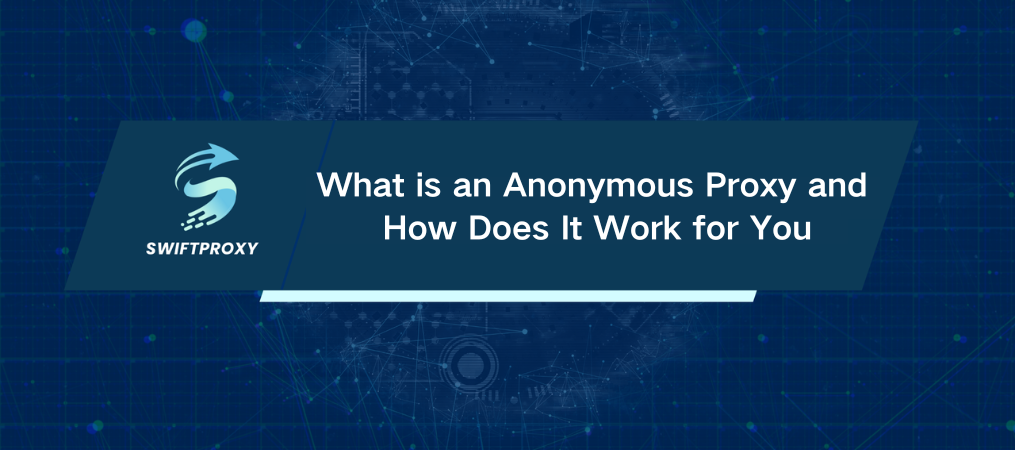What is an Anonymous Proxy and How Does It Work for You

In a world where online privacy is constantly under threat, one tool stands out for its simplicity and effectiveness—the anonymous proxy. This powerful tool helps protect your personal information by hiding your real IP address while you browse the web. But how exactly does it work and why should you use one? Let's dive in.
What is an Anonymous Proxy
An anonymous proxy acts as a bridge between you and the websites you visit. Instead of directly connecting to a site, your internet traffic is routed through a proxy server. This server forwards your requests, making it appear as if it's the one browsing, not you. The website you visit only sees the proxy server's IP address, keeping your real identity hidden. The result? Greater online privacy and security.
Why Should You Use an Anonymous Proxy
1. Protect Your Browsing History
Your online activity leaves a digital trail, one that can be tracked, recorded, and even sold. By using an anonymous proxy, you prevent your browsing history from being linked back to your real IP address. This is especially important if you want to avoid unwanted tracking or surveillance.
2. Access Blocked Content and Avoid Targeted Ads
Some websites block content based on your location or identity, and many online services bombard you with ads tailored to your personal data. An anonymous proxy helps you bypass these restrictions by masking your location and preventing websites from collecting personal information to target ads.
3. Bypass Geoblocks and Censorship
Want to access content that's restricted in your country? An anonymous proxy can make it seem like you're browsing from a different location, allowing you to view websites or stream videos that are otherwise off-limits.
How Does an Anonymous Proxy Work
Here's the breakdown: when you connect to a website through an anonymous proxy, your browsing request first goes to the proxy server. The proxy server then forwards that request to the target site, masking your real IP address in the process. The website sees the proxy's IP address instead of your own. Think of it like using a pseudonym online—your real identity remains hidden while you enjoy unrestricted access to the internet.
How to Set Up an Anonymous Proxy
Setting up an anonymous proxy is straightforward and works across a wide range of devices and browsers. Whether you're using Firefox, Chrome, Safari, or any other browser, you can manually configure your proxy settings. On both Mac and Windows, as well as iOS and Android devices, it's easy to connect to a proxy server through your network settings. Once you're set up, you're free to browse anonymously, without the worry of revealing your personal data.
By incorporating an anonymous proxy into your online routine, you add an extra layer of privacy and protection. It is one of the easiest and most effective ways to secure your digital presence. Start using an anonymous proxy today and take control of your online privacy.

















































